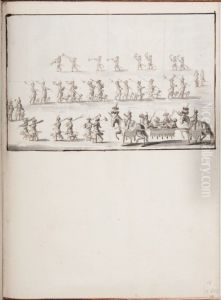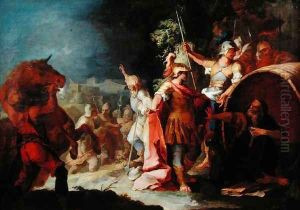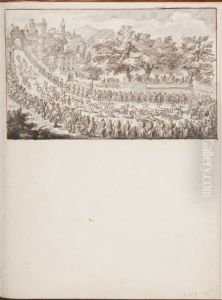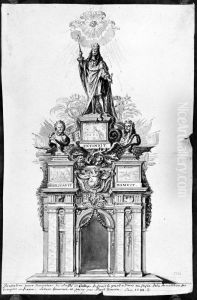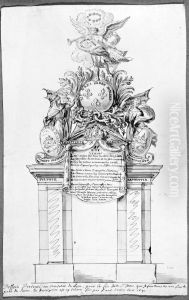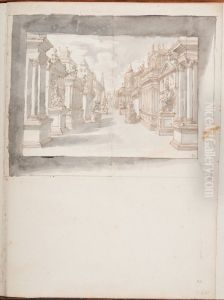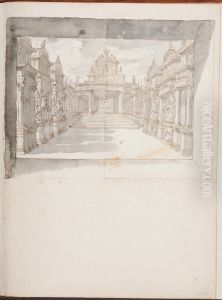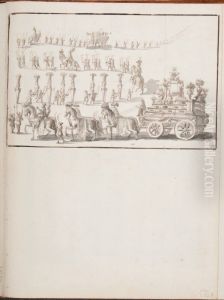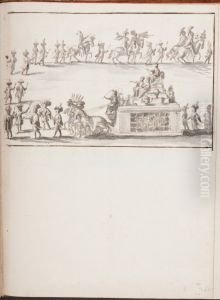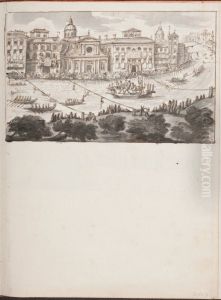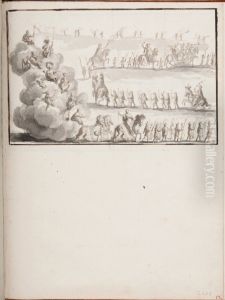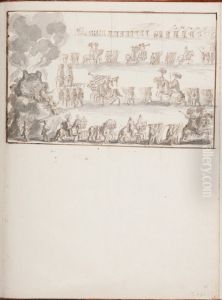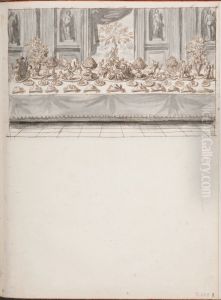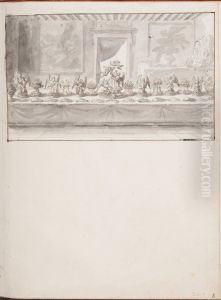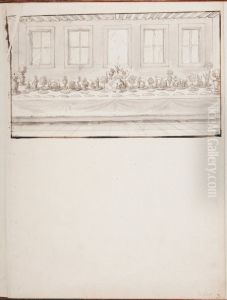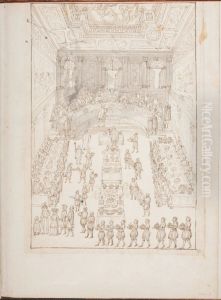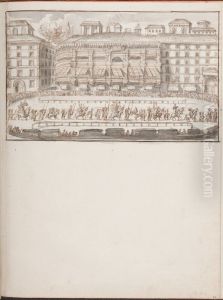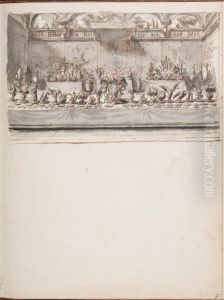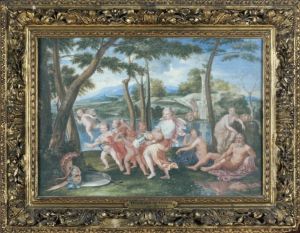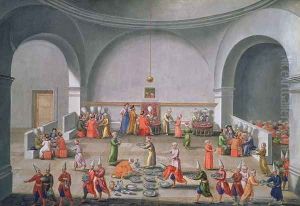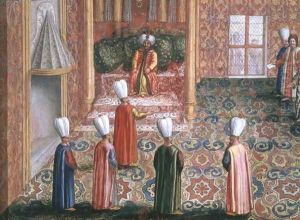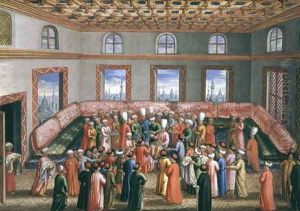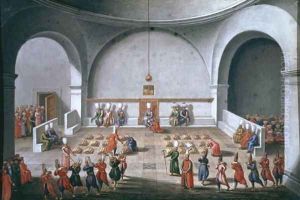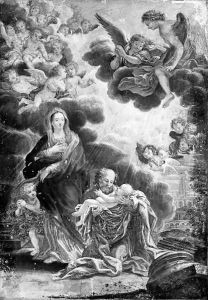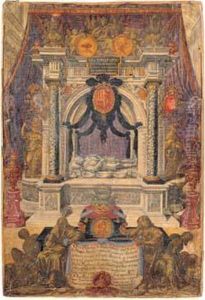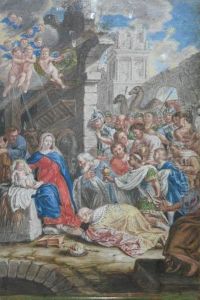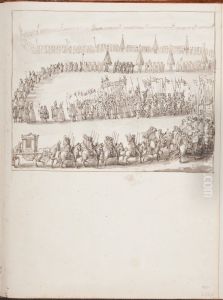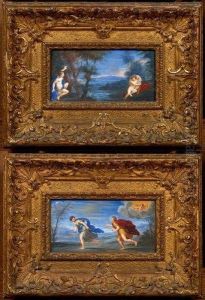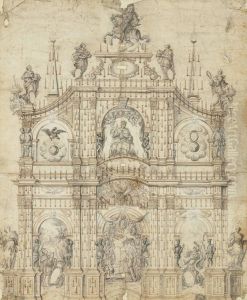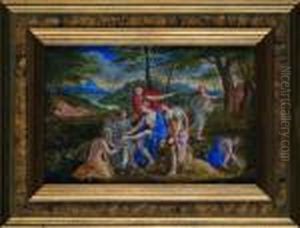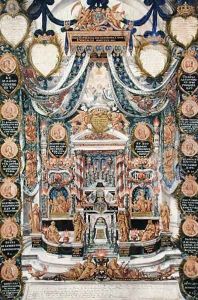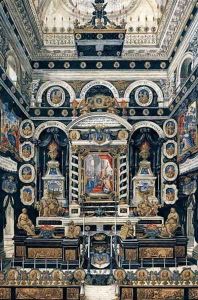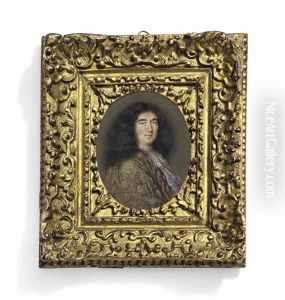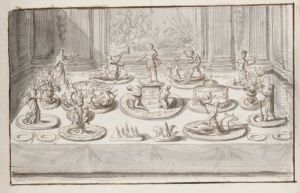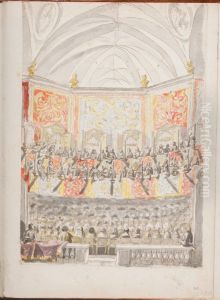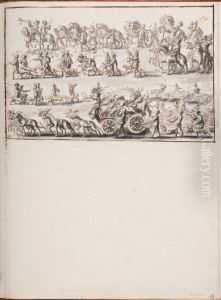Pierre Paul Sevin Paintings
Pierre Paul Sevin, a notable French artist and designer known for his contributions to the decorative arts, was born in 1650 in Tournon-sur-Rhône, France. Sevin's artistic journey began under the tutelage of his father, who was also an artist, enabling him to develop a foundational skill set that would propel his future endeavors in the arts. His early exposure to art, combined with his innate talent, facilitated his acceptance into prestigious circles, including the Royal Academy of Painting and Sculpture in Paris, where he further honed his craft.
Sevin's work was predominantly characterized by his intricate designs and illustrations, which played a significant role in the decorative arts during the late 17th and early 18th centuries. He was particularly renowned for his mastery in creating ornamental designs, which were utilized in various mediums including tapestries, book illustrations, and ecclesiastical vestments. His ability to blend religious and secular themes with a meticulous attention to detail and composition set his work apart from his contemporaries.
Throughout his career, Sevin collaborated with several prominent figures and institutions, contributing to major projects that have since been recognized as significant cultural heritage. One of his most notable collaborations was with the Manufacture des Gobelins, a historic tapestry factory in France, where he contributed to the production of tapestries that were deemed fit for the royal court and nobility. This partnership underscored his reputation as a leading designer of his time.
Despite his contributions to the arts and the recognition he received during his lifetime, Pierre Paul Sevin's work has not always been widely acknowledged in the mainstream narrative of art history. However, scholars and enthusiasts of the decorative arts continue to study his designs and illustrations, appreciating their complexity and the skill evident in their execution.
Sevin passed away in 1710, leaving behind a legacy that has influenced the decorative arts in France and beyond. His works remain a testament to the artistic fervor of the late 17th and early 18th centuries, embodying the elegance and intricacy that defined the period. As an artist, Sevin's contributions have provided valuable insights into the styles and techniques of the Baroque era, making him a figure of enduring interest in the study of art history.
